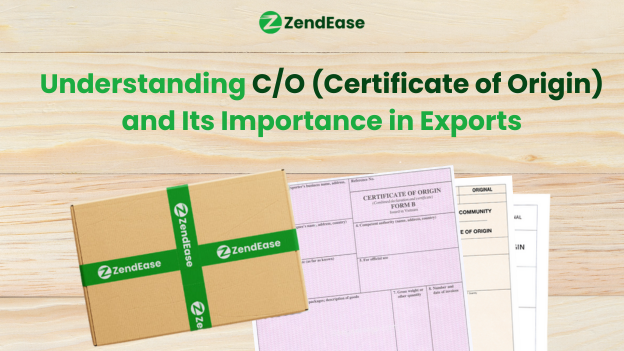Understanding C/O (Certificate of Origin) and Its Importance in Exports
by Ly Nguyen on Aug 13, 2025

When shipping goods internationally, customs authorities want to know more than just what you’re exporting — they also want to know where it comes from. That’s where the Certificate of Origin (C/O) plays a crucial role.
A C/O is an official document that certifies the country in which your goods were produced or manufactured. Typically issued by a chamber of commerce or an authorized body, it is required by many countries for customs clearance. But beyond being “just a document,” the C/O can make or break your shipment’s journey.
Why the Certificate of Origin Matters
-
Determines Import Duties and Taxes
Many countries have trade agreements that reduce or eliminate tariffs for goods originating from specific countries. For example, under the ASEAN Trade in Goods Agreement (ATIGA), eligible goods from Vietnam can enjoy lower or zero import duties in other ASEAN countries — but only if the correct C/O is presented.
-
Ensures Customs Compliance
Without a proper C/O, shipments may face delays, additional inspections, or even rejection at the border. This can lead to extra costs, demurrage charges, and dissatisfied customers.
-
Supports Trade Relationships
Providing accurate origin documentation builds trust with overseas buyers. It shows that you understand their import regulations and are committed to smooth, transparent transactions.
Types of Certificate of Origin
Exporters should understand that Certificates of Origin come in two main types, each serving a different purpose depending on the trade context:
-
Preferential Certificate of Origin
This type of C/O is issued when your goods qualify for special tariff reductions or exemptions under specific trade agreements between countries. These agreements, like free trade agreements (FTAs), aim to encourage trade by lowering import taxes on goods that meet certain origin criteria.
For example:- Form D is used for goods traded within ASEAN countries under the ASEAN Trade in Goods Agreement (ATIGA).
- Form E applies to goods exported from ASEAN countries to China under the ASEAN-China Free Trade Area (ACFTA).
Using a preferential C/O allows your buyer to benefit from reduced import duties or even duty-free access, making your products more competitive in the destination market.
-
Non-Preferential Certificate of Origin
This certificate is used when there is no applicable trade agreement between the exporting and importing countries, or when your goods do not qualify for preferential treatment. Even without tariff benefits, many countries still require a non-preferential C/O as proof of where the goods originated, mainly for customs control, statistical, or regulatory purposes.
Why Choosing the Correct Type Matters
Using the wrong type of C/O can have serious consequences:
- Your buyer may miss out on tariff preferences, leading to higher import costs.
- Customs authorities may reject your shipment or delay clearance due to improper documentation.
- It may affect your company’s credibility and trading relationships.
Therefore, it’s crucial to identify which type of C/O applies to your shipment based on the destination country and trade agreements in place, and to prepare the document accordingly.
How to Obtain a Certificate of Origin
Based on ZendEase’s experience supporting exporters in Vietnam and the Philippines, the typical steps are:
-
Prepare the necessary documents, including:
- Commercial Invoice
- Packing List
- Bill of Lading or Airway Bill
- Export Declaration
- Other supporting certificates, depending on the goods (e.g., phytosanitary, quality, or fumigation certificates)
- Apply to the authorized body, usually the Vietnam Chamber of Commerce and Industry (VCCI) or agencies designated by the Ministry of Industry and Trade.
- Submit and get approval – Applications can often be made in person or online. Once approved, the C/O is issued for inclusion with your export documents.
Common Mistakes to Avoid
- Providing incorrect HS codes or product descriptions
- Using mismatched documents (e.g., quantity or weight discrepancies between invoice and packing list)
- Applying for the wrong type of C/O relevant to the trade agreement in use
Final Thoughts
The Certificate of Origin (C/O) is more than just a document; it's essential for the smooth passage of your goods across borders. Accurate preparation of the C/O can facilitate quicker customs clearance, reduce expenses, and foster stronger relationships with international clients.
At ZendEase, we've witnessed firsthand how a meticulously prepared C/O can transform a potentially complex shipment into a seamless and predictable operation. Recognizing the significance of the C/O is the initial step; handling it with precision ensures your exports truly reach their full potential.
Need help with your Certificate of Origin or export documentation?
Contact ZendEase today — our experienced team is ready to guide you through every step of the process, making your exports seamless and stress-free.
